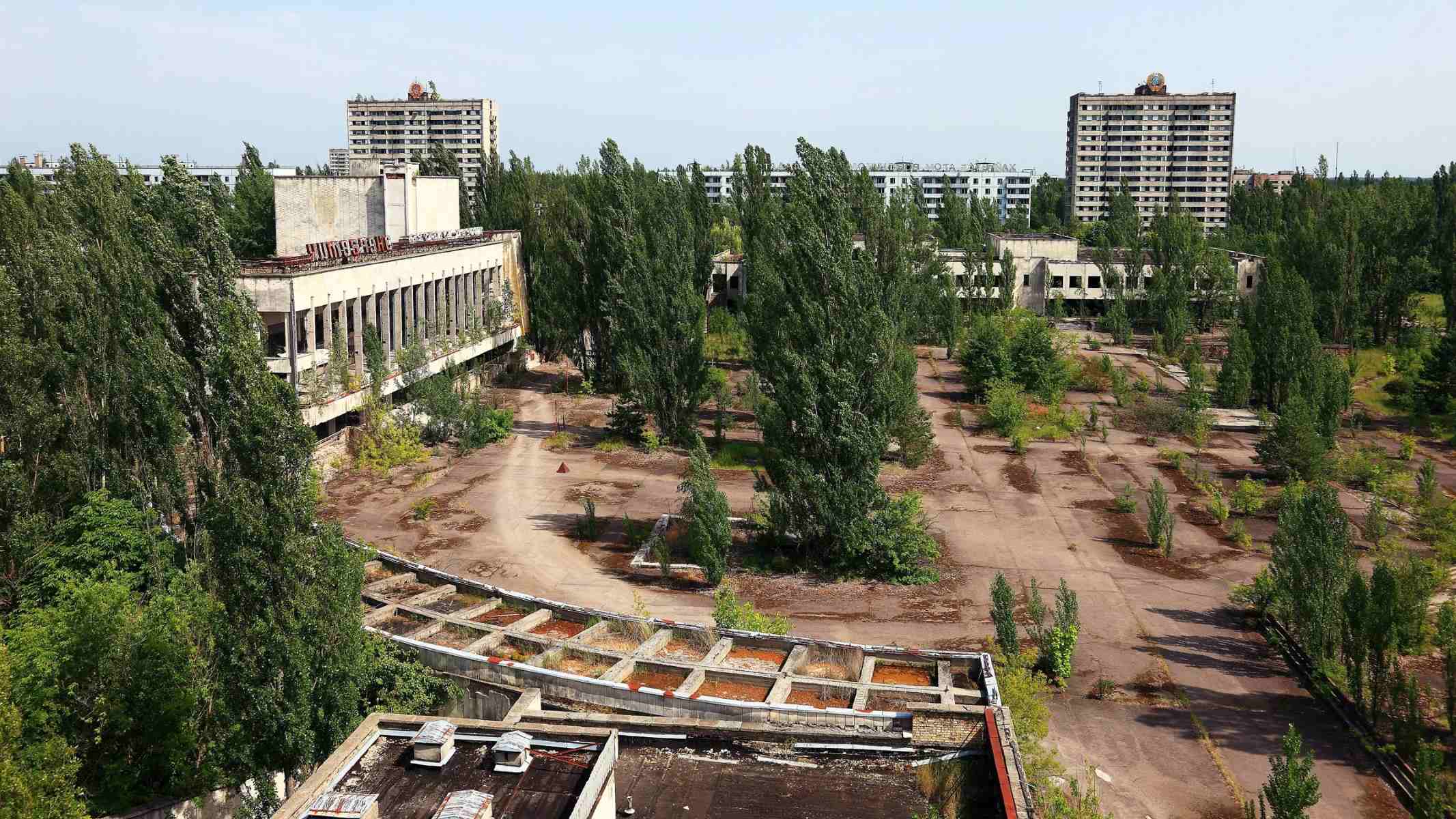Secrets Of The Chernobyl Exclusion Zone

Have you ever wondered what lies within the Chernobyl Exclusion Zone? This mysterious area, left abandoned after the 1986 nuclear disaster, has become a unique destination for adventurous travelers. Despite its eerie reputation, the zone offers a rare glimpse into a world frozen in time. From the hauntingly empty streets of Pripyat to the wildlife reclaiming the land, there's much to see and learn. Whether you're a history buff or just curious, visiting this place provides an unforgettable experience. Let's dive into the secrets and stories that make the Chernobyl Exclusion Zone a must-visit.
Secrets of the Chernobyl Exclusion Zone
The Chernobyl Exclusion Zone, a place frozen in time, holds many secrets. This area, abandoned after the 1986 nuclear disaster, offers a unique glimpse into a world left behind. Let's uncover some of the most intriguing spots within this eerie yet fascinating zone.
Pripyat: The Ghost Town
Pripyat, once a bustling city, now stands as a haunting reminder of the past. Its empty streets and decaying buildings tell a story of sudden evacuation and abandonment.
Pripyat Amusement Park: Scheduled to open just days after the disaster, this park never saw a single visitor. The Ferris wheel and bumper cars remain eerily still, rusting away.
Pripyat Hospital: This hospital treated the first victims of the disaster. The basement still contains highly radioactive clothing from the firefighters who responded to the initial explosion.
Energetik Palace of Culture: This cultural center once hosted concerts, dances, and other social events. Now, its grand halls are silent, filled with dust and debris.
The Chernobyl Nuclear Power Plant
The heart of the disaster, the Chernobyl Nuclear Power Plant, is a critical site within the exclusion zone. It’s where the catastrophic explosion occurred, leading to widespread radioactive contamination.
Reactor No. 4: The epicenter of the explosion, Reactor No. 4, is now encased in a massive steel sarcophagus known as the New Safe Confinement. This structure aims to contain the radiation for the next 100 years.
Control Room 4: The control room where the fatal mistakes were made remains highly radioactive. Visitors can only stay for a few minutes, even with protective gear.
Cooling Pond: This large body of water was used to cool the reactors. Now, it’s home to surprisingly abundant wildlife, including giant catfish.
Duga Radar: The Russian Woodpecker
Hidden deep within the forest, the Duga Radar was part of the Soviet Union's missile defense early-warning system. Its massive structure and mysterious purpose have sparked many theories.
Duga-1: This enormous radar system, nicknamed the "Russian Woodpecker" due to the tapping noise it emitted, was designed to detect incoming missiles. It stands as a colossal relic of the Cold War era.
Duga Command Center: The command center for the radar system is filled with old equipment and documents, offering a glimpse into the secretive operations conducted here.
Wildlife in the Exclusion Zone
Despite the high radiation levels, the exclusion zone has become an unexpected haven for wildlife. Many species have thrived in the absence of human activity.
Red Forest: Named for the color the trees turned after absorbing high levels of radiation, the Red Forest is one of the most contaminated areas. Yet, it’s also a hotspot for wildlife, including wolves, boars, and deer.
Przewalski's Horses: These rare horses, once nearly extinct, were introduced to the zone in the 1990s. They have adapted well and their population has grown significantly.
Birds of Chernobyl: Various bird species, including eagles and owls, have been observed in the zone. Some studies suggest they have adapted to the radiation in unique ways.
The People Who Stayed
While most fled, a few residents chose to stay or return to their homes within the exclusion zone. Their stories add a human element to this desolate area.
Samosely: These self-settlers, mostly elderly, returned to their villages despite the risks. They live off the land, maintaining a traditional lifestyle.
Chernobyl Workers: A small number of workers still operate within the zone, maintaining the sarcophagus and conducting scientific research. Their presence is vital for ongoing safety and study.
Abandoned Villages
Scattered throughout the exclusion zone are numerous villages, each with its own story of sudden abandonment. Exploring these places offers a poignant look at life before the disaster.
Kopachi Village: This village was buried to reduce radiation spread, leaving only a few buildings above ground. A kindergarten, filled with toys and books, stands as a haunting reminder of the children who once played there.
Zalissya Village: One of the largest villages in the zone, Zalissya’s homes and farms are slowly being reclaimed by nature. Personal belongings left behind tell stories of the lives abruptly interrupted.
Yaniv Railway Station: Once a bustling hub, this station now sits silent and overgrown. Trains that once connected people now rust on the tracks, a symbol of halted progress.
The Lasting Impact of Chernobyl
Chernobyl's Exclusion Zone is more than an abandoned area. It's a powerful reminder of human error and nature's resilience. Visiting this place offers a unique look at history and the environment's ability to recover. The haunting beauty of Pripyat, the wildlife reclaiming the land, and the stories of those who lived through the disaster make it a compelling destination.
For those interested in history, science, or adventure, Chernobyl provides an unforgettable experience. It's a place where you can learn, reflect, and witness the unexpected rebirth of nature. As you explore, remember the lessons of Chernobyl and the importance of safety and responsibility.
Whether you're planning a trip or just curious, the Exclusion Zone holds many secrets waiting to be uncovered. It stands as a testament to both the fragility and strength of our world.

